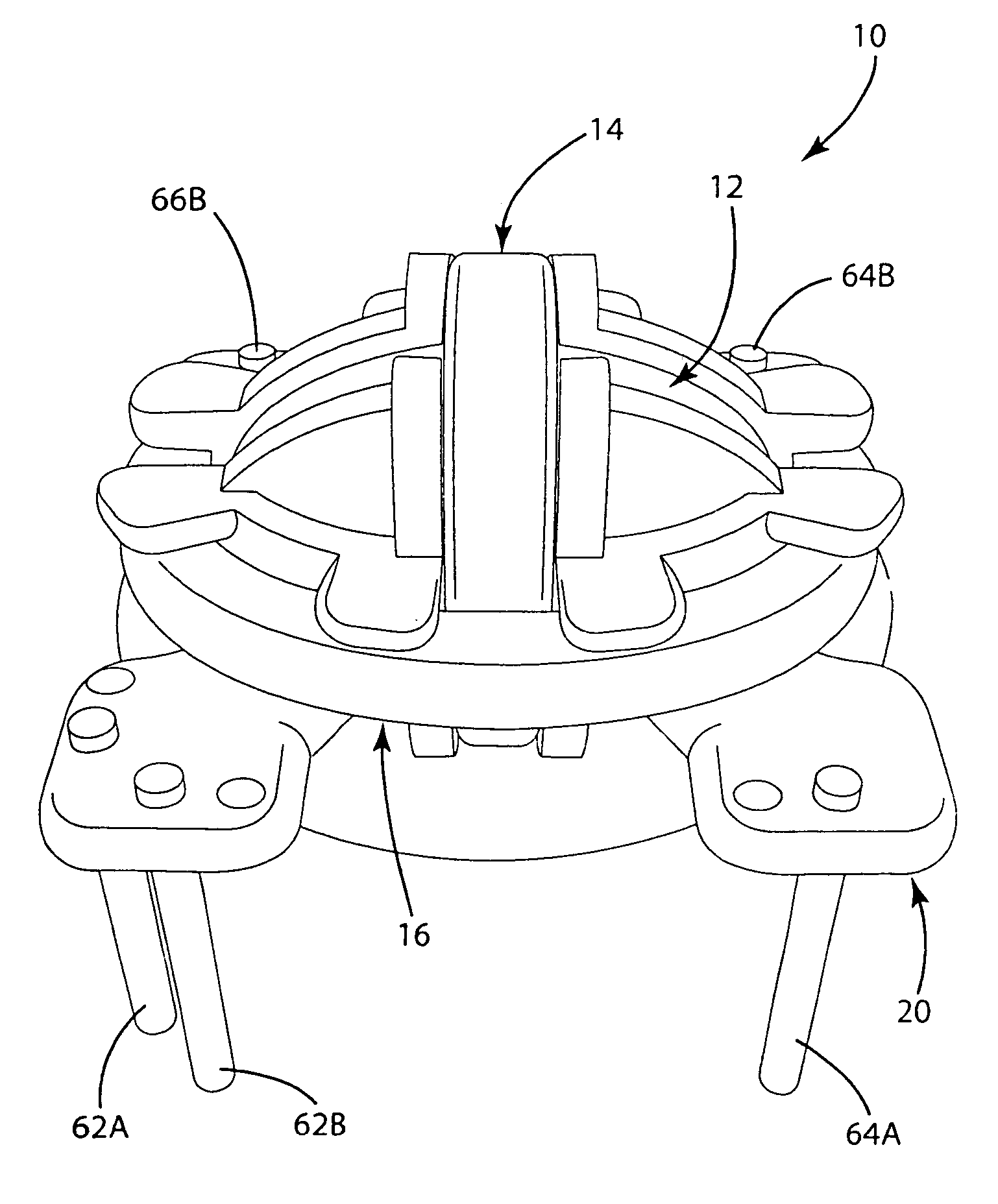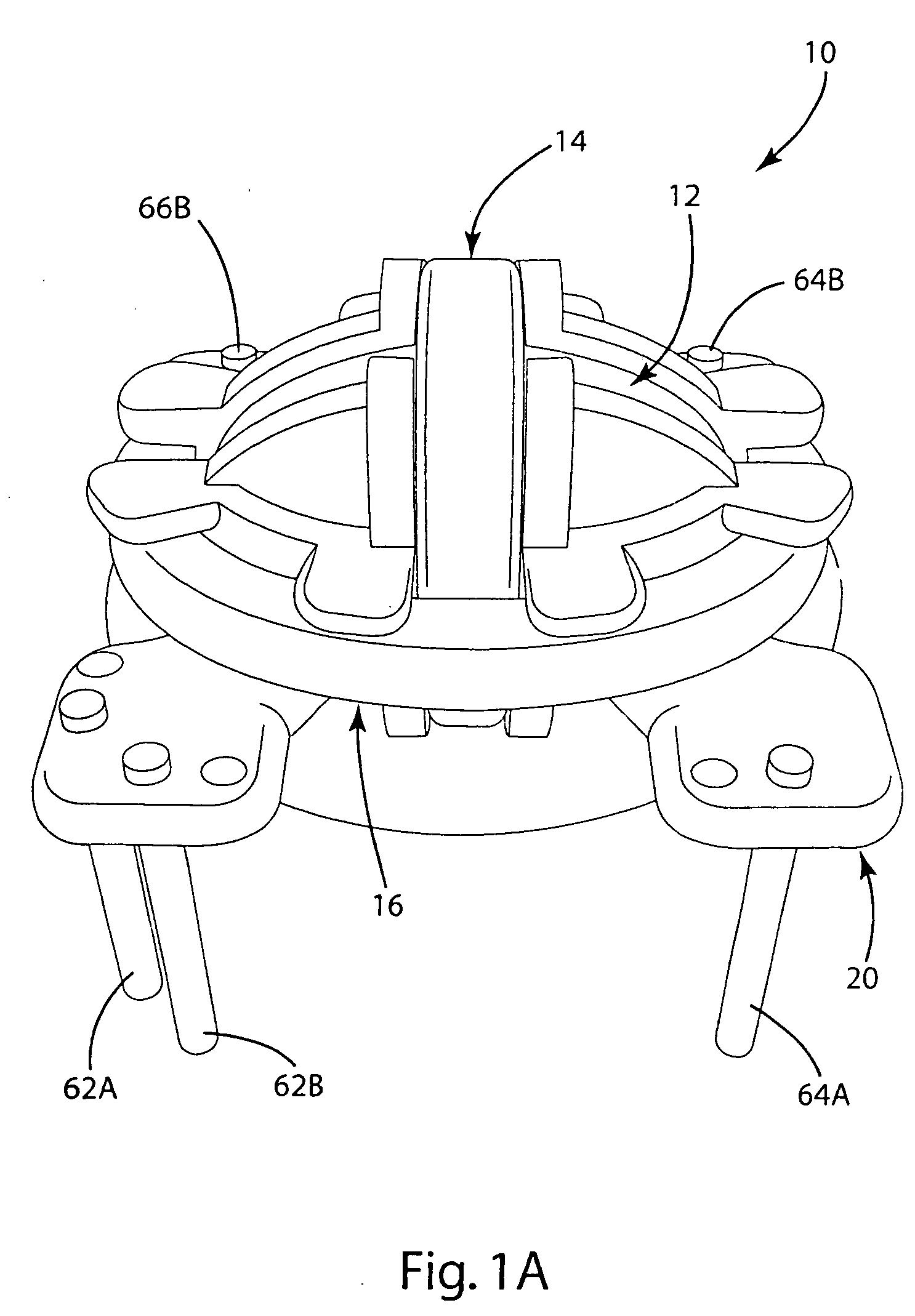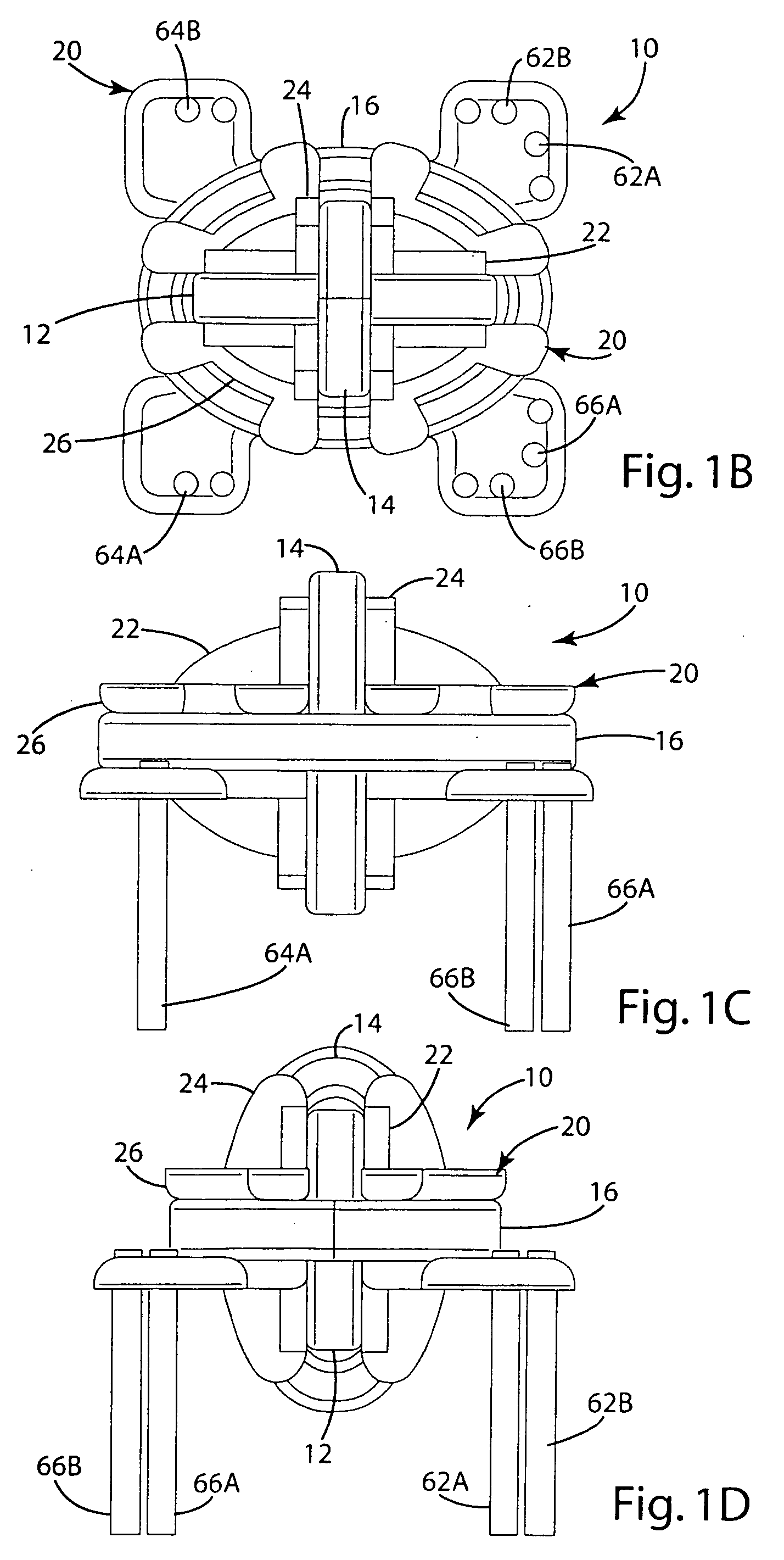Inductive coil assembly
a technology of inductive coils and coil assemblies, which is applied in the direction of transformer/inductance casings, gas-filled discharge tubes, and battery arrangements for several simultaneous batteries. it can solve the problems of insufficient inductive coupling, limited use of inductive power transfer, and significant limitation on the overall design and adaptability of inductively powered devices. achieve sufficient inductive coupling, facilitate manufacturing, and permit molding
- Summary
- Abstract
- Description
- Claims
- Application Information
AI Technical Summary
Benefits of technology
Problems solved by technology
Method used
Image
Examples
Embodiment Construction
[0030] An inductive coil assembly 10 manufactured in accordance with an embodiment of the present invention is shown in FIGS. 1a-d. The inductive coil assembly 10 generally includes three separate coils 12, 14 and 16 that are arranged at separate orientations with respect to one another. The separate coils 12, 14 and 16 may be electrically connected to a device through an inductive control circuit. The separate coils 12, 14 and 16 may be wrapped around a one-piece bobbin 20 that facilitates the manufacture and assembly of the present invention. Although the present invention is described in connection with a three-coil embodiment, the number of coils may vary.
[0031] As noted above, the inductive coil assembly 10 includes a bobbin 20 for supporting the various coils 12, 14 and 16. In one embodiment, the bobbin 20 is a one-piece structure that is specially designed for easy manufacture and easy assembly of the inductive coil assembly 10. In the illustrated embodiment, the bobbin 20 i...
PUM
| Property | Measurement | Unit |
|---|---|---|
| angle | aaaaa | aaaaa |
| angle | aaaaa | aaaaa |
| mutual inductance | aaaaa | aaaaa |
Abstract
Description
Claims
Application Information
 Login to View More
Login to View More - R&D
- Intellectual Property
- Life Sciences
- Materials
- Tech Scout
- Unparalleled Data Quality
- Higher Quality Content
- 60% Fewer Hallucinations
Browse by: Latest US Patents, China's latest patents, Technical Efficacy Thesaurus, Application Domain, Technology Topic, Popular Technical Reports.
© 2025 PatSnap. All rights reserved.Legal|Privacy policy|Modern Slavery Act Transparency Statement|Sitemap|About US| Contact US: help@patsnap.com



